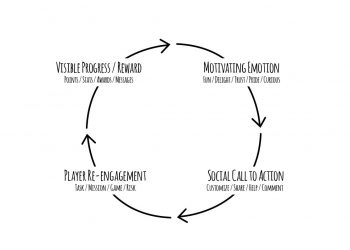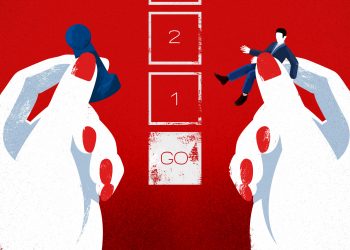CURE Runners is an e-learning game developed by the Austrian developer agency OVOS. It aims to teach players about money management using the redeemable points of the game as a virtual economy. Which will already sound familiar to anyone who read the previous blogpost, discussing the most common game mechanics. In this post I want to have look at if and how CURE Runners, incorporated these mechanics:
Schlagwort: game mechanics
¿Hablas Gamificación?
GAMIFICATION OF ELECTIONS – PART 6
In this article I will dissect the popular language learning app “Duolingo”. I will take a look at the different gamification elements in play, the UI design and UX of the app and analyse them. Disclaimer: I won’t go into the monetization efforts of this app – as this would be enough to justify a blog article on its own.
Duolingo uses implicit game mechanics: it is a learning app that uses game mechanics, instead of being a game with learning elements attached to it. This means that we will see the full potential of gamification methods in “serious apps”. After taking a first look at the player journey, we see that the different phases don’t really differ too much from another.
Driving the point home
GAMIFICATION OF ELECTIONS – PART 5
Of course, filling an XP bar and collecting badges is not why people play a game Those are merely mechanics to engage the player on a deeper level, using human psychology. Gamification mechanics are tools, not the actual goal of a gamified app. So, in order to craft an experience the player actually enjoys, designers have to design for player motivation, not for mechanics. The Octalysis helps in this regard, as it divides player motivation in distinct categories, that are easy to design for.
Common Game Mechanics
There are seven basic game mechanics that should be considered when creating a gamified experience: points, levels, leaderboards, badges, onboarding, challenges/ quests, and engagement loops.
Points
In order to motivate the player to take certain actions in alignment with the behavioral objectives, each action should have a certain point value assigned to it. These points should be part of the experience point system which is important to rank and guide players through the game. Other point systems that can be included in a game are redeemable points, which are used to create a virtual economy and are used as „currency“ within the system, skill points which are assigned only to specific activities alongside the core storyline or objectives to develop an additional skillset. Moreover, there are karma points, whose only purpose is to spend them and reputation points which are the most complex point system as they are used to create credibility and trust.
Six Degrees of Gratification
GAMIFICATION OF ELECTIONS – PART 3
Gratification is one of the most powerful experiences of the psyche. It is often said, that patience is a virtue. Seeking gratification is the direct opposite: it is the satisfaction gained by successful short-term tactics and emotional impulses, rather than planned, deferred gratification which is obtained by achieving long-term goals. While the latter is a cornerstone in Strategy games – creating a game winning strategy from the very beginning, often times foregoing short-term gains – most other game genres pander to short-term achievements and instant rewards.
What is Gamification, and How Can I Avoid Use It?
GAMIFICATION OF ELECTIONS – PART 2
“Gamification is the use of features and concepts (e.g. points, levels, leader boards) from games in non-game environments, such as websites and applications, in order to attract users to engage with the product.”
—Macmillan Dictionary
So, what are those “features and concepts from games”? How do they work and with what purpose? While these features are present in basically every game there is (after all, they are what makes them a game) there are variations in their use.
Game Mechanics and Knowledge Encoding
An educational game does not need to have a serious storyline in order to transmit serious information or knowledge. Rather it is the fundamental mechanics of the game that are important. The mechanics determine how the player interacts with and consumes the presented information. Dr. Christopher See suggests in his TEDxTalk that a good way to create an educational game is to start with the content and concepts that should be covered in the game. Then build them into gamified training environment with mechanics hat help embed the information effectively in the memory. (1)





